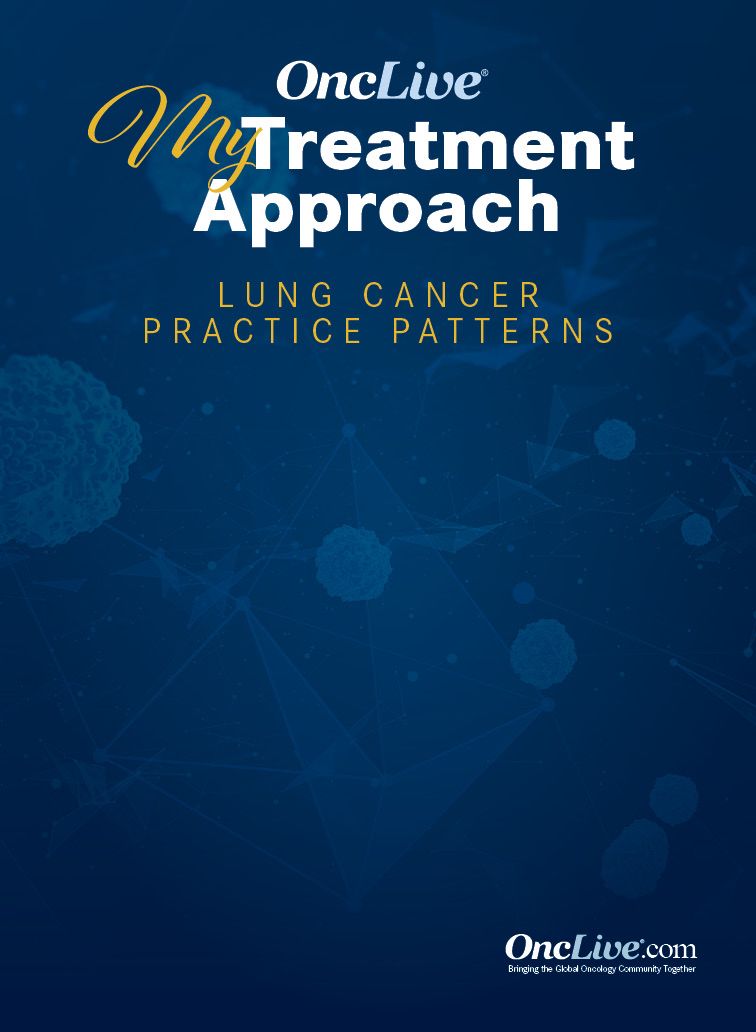Publication
Article
Supplements and Featured Publications
Nurse Practitioners Are a Touchstone in Lung Cancer Management
Author(s):
Communication and education of a patient with lung cancer and their family is only part of a nurse practitioner’s responsibility. Moreover, they often represent the primary point of contact for a patient when it comes to their diagnostic workup, treatment follow-up, and symptom management.
Blanca A. Ledezma, NP

Communication and education of a patient with lung cancer and their family is only part of a nurse practitioner’s responsibility, explained Blanca A. Ledezma, NP, who added that they often represent the primary point of contact for a patient when it comes to their diagnostic workup, treatment follow-up, and symptom management.
“We play a huge role in patients’ care from their [initial] consultation and throughout their treatment journey, whether [the patient has] early-stage, intermediate-stage, or metastatic disease. We are a main point of contact for patients,” said Ledezma.
In an interview with OncLive®, Ledezma, of UCLA Health, discussed the importance of nurse practitioners in the management of patients with lung cancer.
OncLive®: What are the different ways in which a nurse practitioner can augment the care of patients with lung cancer?
Ledezma: Nurse practitioners can augment the care of patients with lung cancer in many ways. We play a key role in patients’ care overall from the beginning of their journey and through the continuum of their care. From the first visit when we see the patients in consultation, review the medical records, proactively ensure acquisition of tissue when necessary to ensure that the proper diagnostic testing can be done, and will ensure that additional diagnostic testing is ordered and or collaboration and communication with the multidisciplinary team.
Education of the patient, family members and caretakers is a key component of the patient journey. It is a very stressful time for patients however, it is important they understand every process of their care. They may want to get started with treatment or whatever intervention they needed “yesterday.” As nurse practitioners, we are able to explain in a detailed fashion the importance of the data acquisition, obtaining all of the molecular biomarkers results prior to starting treatment.
If patients do require systemic treatment with an infusional or oral oncolytic, we are involved in the ordering and management of those treatments. The therapeutic treatments can have adverse effects that can be unique and educating patients, family members and caretakers of adverse effects, setting up realistic expatiations and the importance of early communication are key roles of the nurse practitioners.
What is the involvement of a nurse practitioner with medical oncologists, radiation oncologists, thoracic surgeons, pulmonologists, etc.?
The involvement of nurse practitioners with medical oncologist, radiation oncologist, thoracic surgeons, pulmonologists and other members of the patient care team is that we are colleagues and we collaborate and communicate all for the goal of the patient to ensure that we are doing everything in a timely fashion so that the patient may have the proper evaluation or intervention and the most efficacious therapeutic treatment approach.
How does a nurse practitioner’s involvement range from the care of a patient with early-stage disease to metastatic disease when it comes to their diagnosis, genetic testing, and treatment recommendations?
Biomarker testing is important for all stages. We play a crucial role in ensuring that we obtain the tissue if needed, or that the testing be done on the tissue or liquid biopsy be completed to have the important treatment data point. This will determine if a patient will have adjuvant treatment or which systemic therapeutics options are appropriate based on the current guidelines and stage of the disease.
With all stages of disease, we are involved from consultation and throughout the continuum of the care. The outcome or treatment plan will vary based on their disease stage. As aforementioned, NPs have extensive involvement in education, ordering of necessary diagnostic data, ordering and management of systemic treatments. Treatment recommendations are done by the attending physician.
How has a nurse practitioner’s role evolved when it comes to adverse effect (AE) management, particularly now that we’re seeing more immunotherapies come to the table?
Immunotherapies have unique related AEs that can be similar to chemotherapy that patients may think is normal to experience and self-manage. Our role as nurse practitioners has evolved in the importance of having patients differentiate what type of systemic treatment they are receiving and the unique side effects that is associated with their specific treatment, and the importance of early reporting of all symptoms for a prompt intervention.
Does a nurse practitioner’s role extend to the clinical trial setting as well?
Yes, absolutely. It’s very exciting to be involved in that setting to see these novel agents that are not approved yet and seeing them come to fruition. We get to see the benefits patients have or lack of response in clinical trial. Additionally, we learn how to manage the AEs and gain treatment experience prior the possible treatment approval if at all.
How does UCLA foster the multidisciplinary care of patients with lung cancer?
We have a great system [at UCLA] to foster the multidisciplinary caring and team process, encompassing all the different services including the thoracic surgeon, radiation oncologist, medical oncologist and more, [all of which are] necessary for our patient care. We have a built-in process to communicate between providers that is very effective and efficient. We are all very reachable and always communicate with each other.










